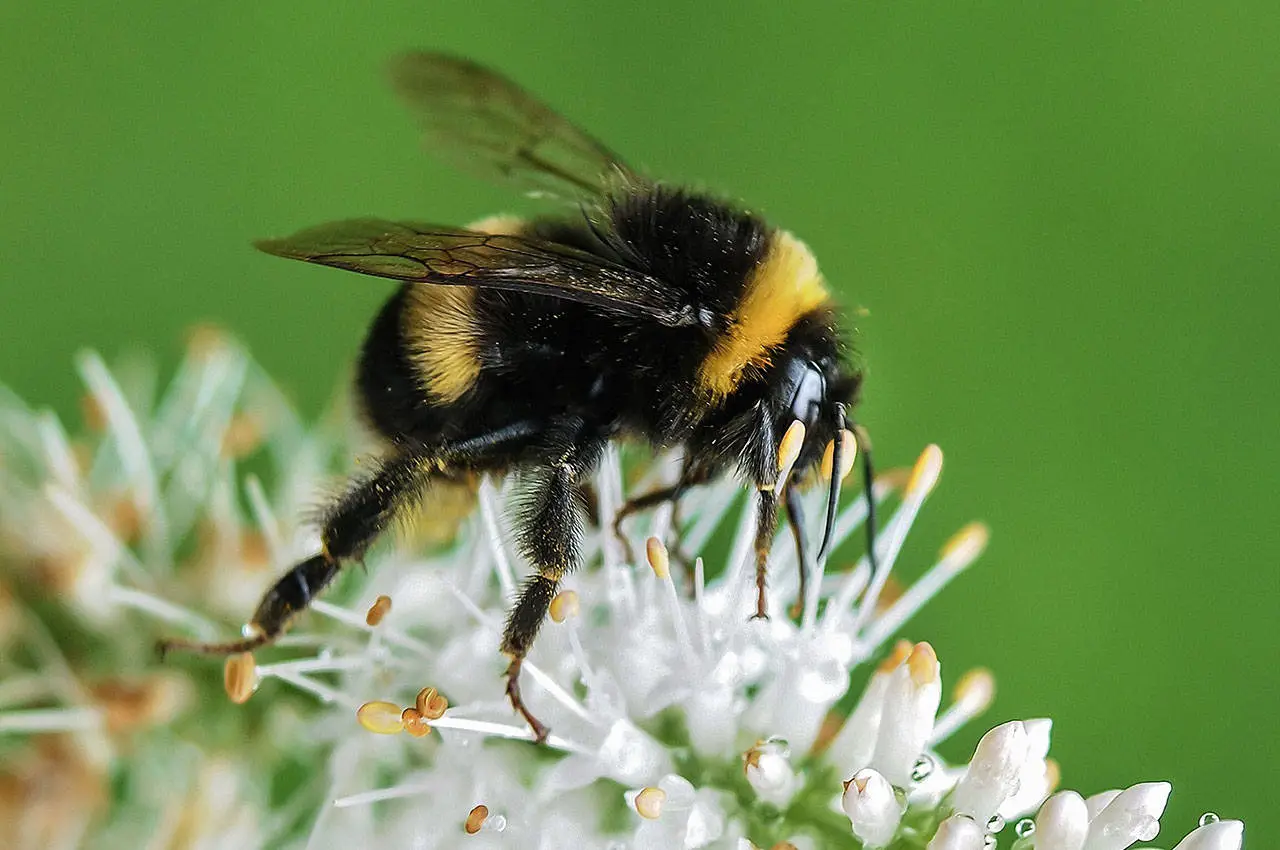Bees are members of the Apidae family which are flying insects that collect nectar and pollen. There are many types of cutest bees, possibly 20 000 types, and there are numerous differences between them. Some bees make honey and some don’t. Some bees can sting, while some other bees can’t. Out of 20,000 different bees, roughly 4,000 types of bees are native to America. The USGS Native Bee Inventory and Monitoring Program develop and designs large- and small-scale surveys for native bees.
Actually, bees are precious and absolutely adorable little creatures. Because they are such an important part of our ecosystem, they are almost the only reason we have food to eat. Furthermore, almost all bee species are peaceful and will only sting you if they move or you move, but most can only sting once.
So, I decided to look at some of the smallest, largest, and cutest types of bees and rank them according to their factors! If you want to know about these bees, read the article till the end.
Types of the World’s Cutest Bees
Mason Bees

Mason bees are very cute. Their carapace comes in many different bright colors, but they burrow into hollow twigs and stumps covered in mud. And these bees fly very fast. These bees don’t sting. During the early spring months, you can try to attract mason bees by providing nesting tunnels with plenty of bee food and a source of mud. Mason Bee houses are bought or made from wood, thick paper straw, or hollow reeds.
Digger Bees

Digger Bees are also known as ground bees. These types of bees are solitary bees that nest underground. The United States is home to approximately 70 types of digger bees. Primarily in the western states around the world, there are an estimated 400 species of these interesting creatures.
Black German Bees

German Black Bee also known as the European dark Bee. These bees are one of the cutest bees. They’re basically the common honey bees’ broodier cousin. Almost every trait about them is identical to the Western Honey Bee’s. They are dark black with dull yellow hairs, and they are a little bit larger. They are great bees through and through. And there’s nothing altogether that special about them.
Blueberry Bees

The blueberry bee is the cutest of all bees. Blueberry pollen is sticky and relatively heavy. Additionally, the shape and position of blueberry flower parts effectively prevent pollen from falling onto receptive stigmas even in self-fertile varieties. Therefore, in order to set fruit, the flowers of the blueberry plant must be pollinated by insects.
Sweat Bees

There are many types of sweat bees. Some bees are solitary, but some show different levels of social behavior. They’re named because they are attracted to perspiration, moisture, and salts. These types of bees are still very important parts of the ecosystem because they look very attractive. But sweat bees’ obsession with licking human sweat is at least more awe-inspiring, because they constantly surround you trying to get a little taste in the middle of their mission. For this reason, sweat flies are at the bottom of my list, because their cute little surface can’t compete with their general fearsomeness.
Smallest Bee — Perdita Minima:
Native bees come in all shapes and sizes. Some gardeners are familiar with the large black and yellow bumblebees (Bombus spp.) or the equally large, usually all-black, carpenter bees (Xylocopa spp.). Honeybees (Apis mellifera) are much smaller, but they are giants compared to many of our nearly 4,000 types of native bees. According to a study, the bee in the southwestern United States is notably the smallest bee in the world. This bee is called Perdita minima. Perdita minima are a diverse genus of about 600 species belonging to the Andrinidae family. Perdita minima are solitary bees. And such bees are not classified as social bees. Many bees of this species are flower specialists and only visit the flowers of one or a few related species in a single plant species.
Perdita minimum is a little less than two millimeters long. As a solitary bee, it builds a shallow nest in sandy desert soils. . Entomologists and naturalists who search for this tiny pollinator usually look for its shadow on the ground rather than the fly itself. This bee is so small that it can easily pass through the netting common insects escape.
Largest Bee—Wallace’s giant bee (Megachile Pluto):
Wallace Giant is also known as Megachile Pluto. This is a massive unit. It is the largest bee in the world. This is four times larger than a honeybee and measures about the length of a human thumb. This bee was first discovered in 1858 by naturalist Alfred Russel Wallace. Who, like Charles Darwin, developed the theory of evolution through natural selection. At that time, Wallace noted the large jaws of bees that looked like deer antlers. But Wallace was the last person on record to have seen one until a biologist at the University of Georgia in Athens found several in 1981. The status of the species has since been unknown.
But a threat to these bees is insects that may be targeting the bees of this species. According to a statement from Robin Moore of Global Wildlife Conservation, an Austin-based nonprofit that sponsored the search. The biggest concern is habitat loss, because Indonesia’s forests are being cut down for agriculture. Researchers want to create a conservation plan for this species of bee, and World Wildlife Conservation hopes that publicizing the record-setting bee will help raise awareness for its conservation.




Add comment